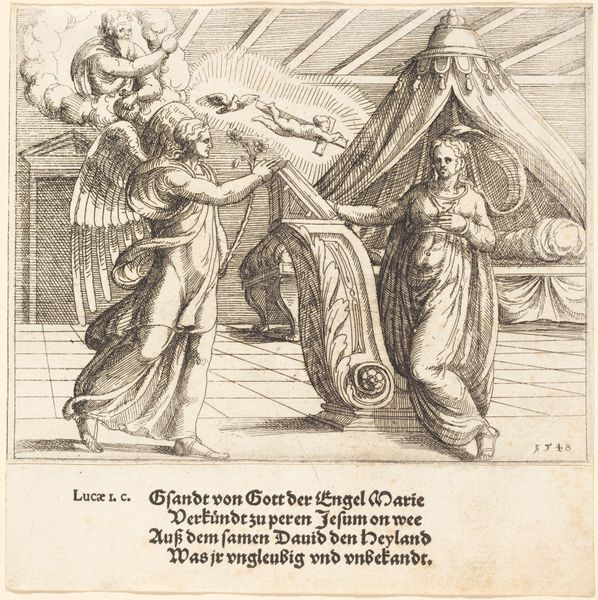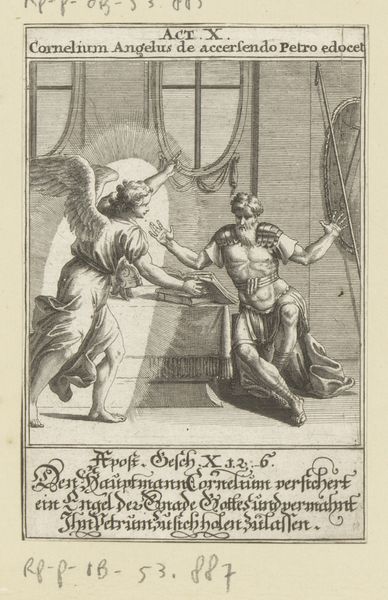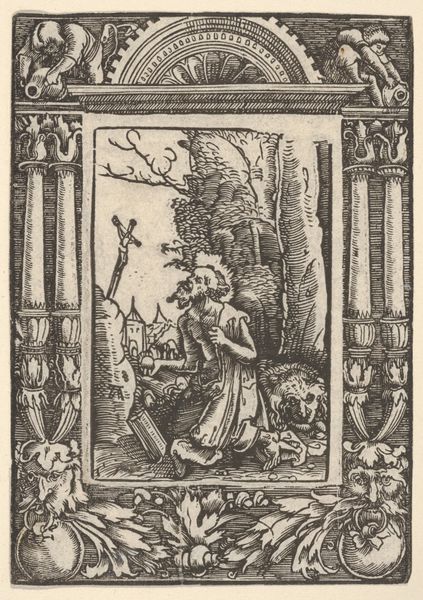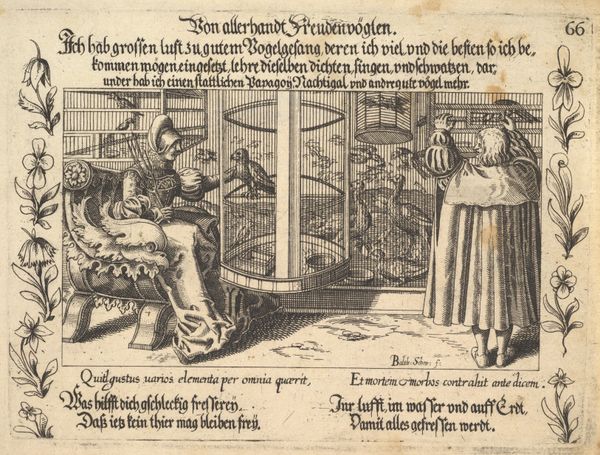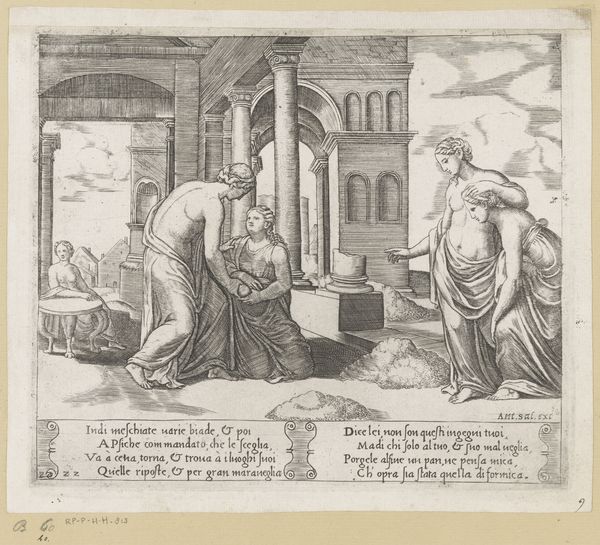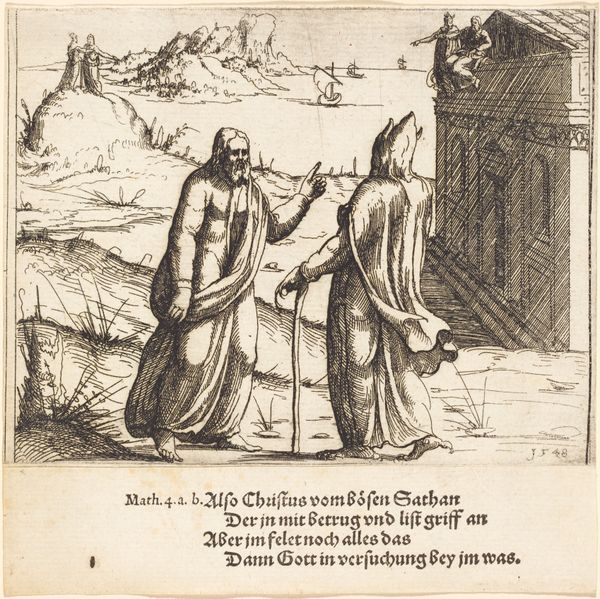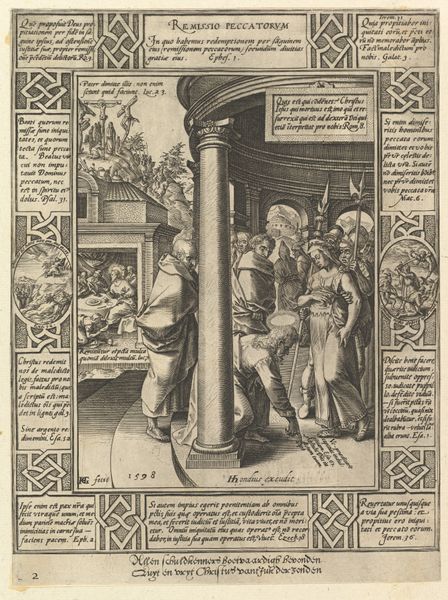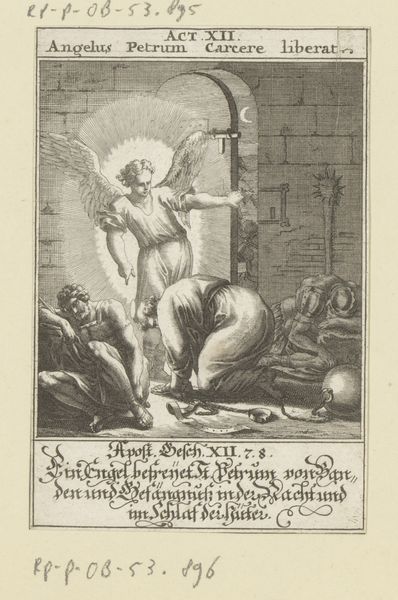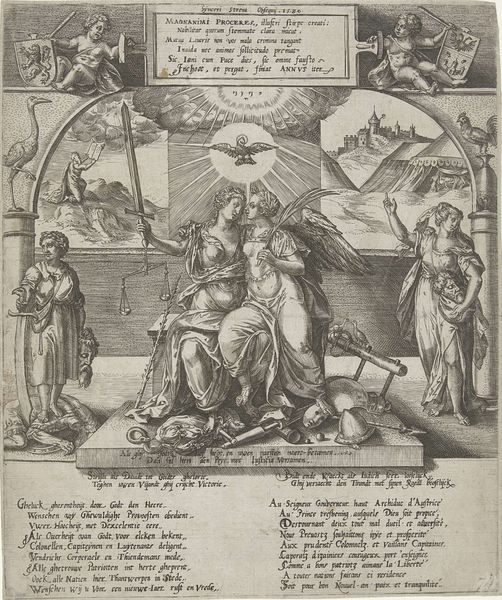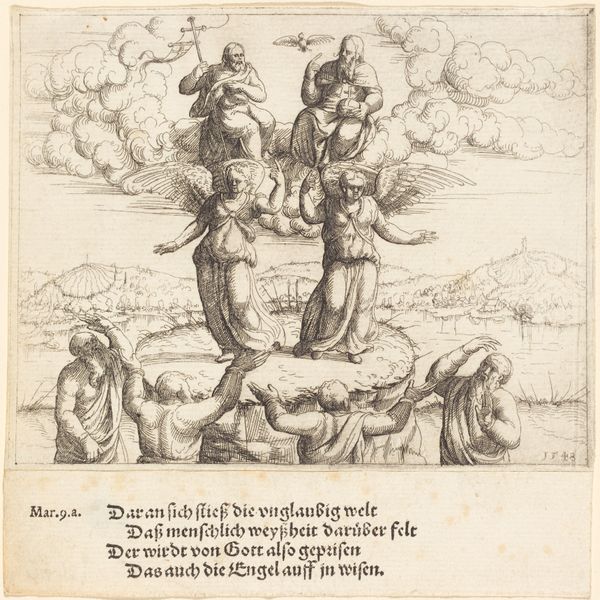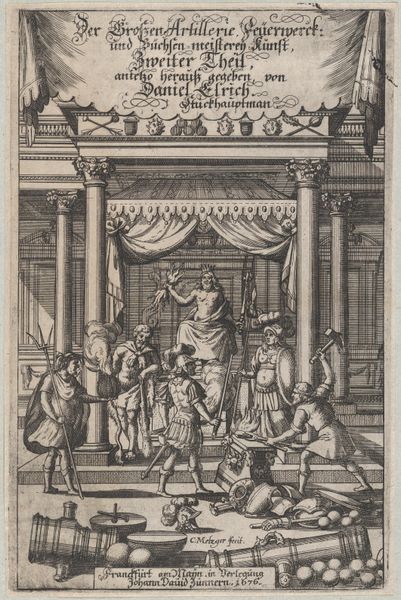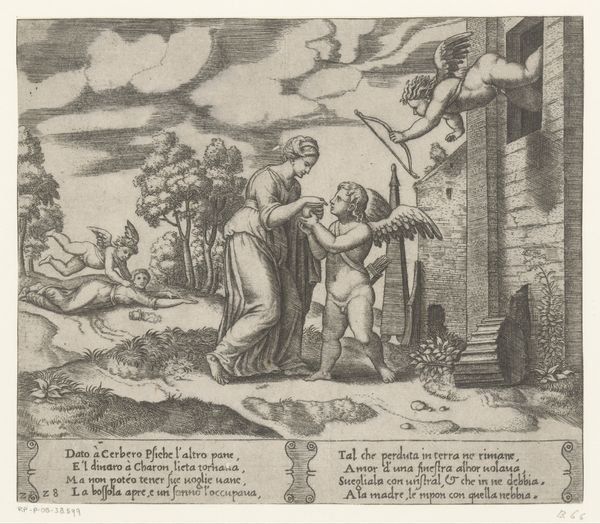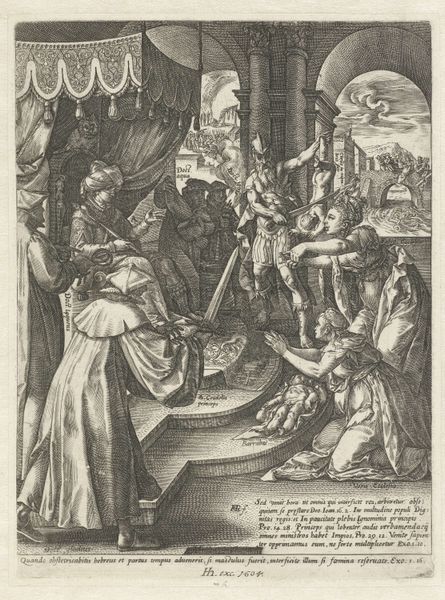
print, engraving
# print
#
figuration
#
line
#
history-painting
#
northern-renaissance
#
engraving
Copyright: National Gallery of Art: CC0 1.0
Curator: Let's turn our attention to "The Annunciation," an engraving dating back to 1547, crafted by Augustin Hirschvogel. Editor: The first thing that strikes me is how formalized and a little cold the depiction feels. Even this pivotal moment in Christian theology appears so rigidly structured. Curator: Well, remember that Hirschvogel worked during the Northern Renaissance. The visual language favored clarity and precision, evident here in the distinct, almost mathematical lines. Also consider that prints like this would have circulated widely. What's its social purpose, beyond illustrating scripture? Editor: It's certainly trying to reinforce specific beliefs. Look at how the male gaze and male God is arranged at the very top and looking directly at a confused or submissive woman; The Annunciation wasn't simply a narrative event; it set the stage for centuries of gendered roles. And this print disseminates those established hierarchies on a mass scale. Curator: Absolutely, that reading of the image reflects contemporary sensibilities, doesn’t it? The engraving situates the virgin in the domestic and religious context where a submissive act, even as part of some plan for humanity, requires this image of feminine virtue. Note also how Gabriel is an instrument between two powerful male deities with his strong winged stance and arm movement which visually dictates direction and flow of ideas. Editor: But perhaps we can also note Mary is literate, depicted at her reading stand. While submitting to God's plan, she still inhabits a space of intellectual capacity within very defined and somewhat diminutive bounds. Even if passively, maybe the scene contains glimmers of active intellect in that restricted space of learning for a woman. Curator: That is something new in the depiction of such a heavily loaded religious story; it opens up other readings of the space around the characters and the ideas the artist explores, something many of its consumers, who have seen numerous version of the Annunciation and understood that religious context fully, would also pick up. Thank you for noticing! Editor: It has been my pleasure, indeed, viewing it through various points, some differing from traditional views, this piece is now more informative than before, I think.
Comments
No comments
Be the first to comment and join the conversation on the ultimate creative platform.
